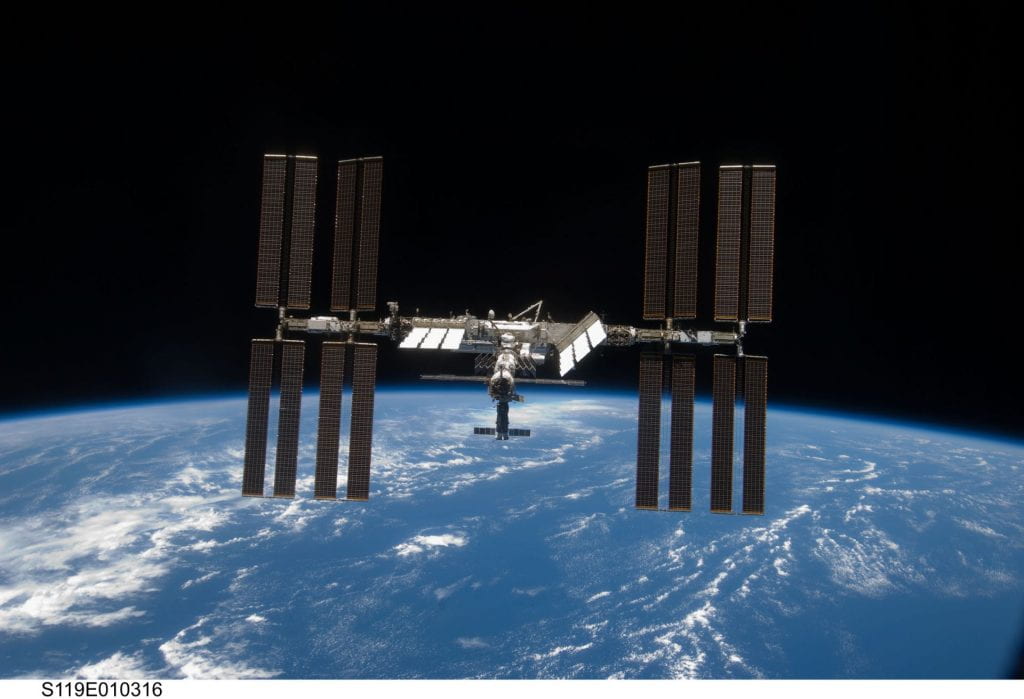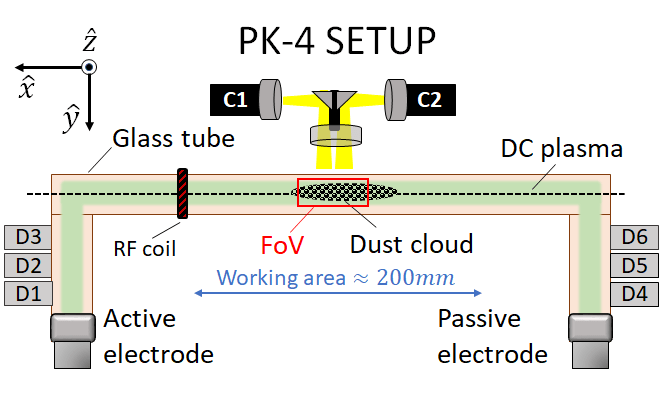The self-organization and stability of macroscopic astronomical objects, such as stars and galaxies throughout the universe, is dominated by the force of gravity. In contrast, when the structures are microscopic, such as systems of atomic and subatomic particles, the same processes are guided by nuclear forces and quantum effects. As one follows the growth of an astronomical body from the subatomic level up, a natural question emerges: What fundamental mechanisms dictate self-organization and stability in the transitional (mesoscopic) range, where the spatial scale is neither small nor large?
A few decades ago, the international complex plasma community recognized that the fundamental questions of mesoscopic physics can be explored using a series of dusty plasma experiments in space. Currently, the most effective way of achieving microgravity conditions is to perform these experiments on board the International Space Station (ISS). In February 2001, the dusty plasma experiment PKE Nefedov became the first natural science experiment installed on board the ISS. Since then, dusty plasma research on the ISS has revealed that the mesoscopic structures can exhibit a variety of condensed and soft matter phenomena including, crystallization and melting, wave instabilities and mode coupling, formation of vortices and self-excited turbulences, and electrorheology. The current dusty plasma lab installed on the ISS, Plasma Kristall-4 (PK-4) , is the first project of this kind with direct involvement of US research groups, one of which is the CASPER group.

The International Space Station., Astronomy Picture of the Day on April 6, 2009
The PK-4 laboratory is a successor of the PKE-Nefedov and PK-3 Plus facilities that investigated complex plasma liquids and solids in uncompressed, homogeneous plasma created by a parallel-plate capacitively coupled RF discharge. In contrast, the PK-4 consists of an elongated Π-shaped glass chamber in which the plasma can be ignited either by cylindrical DC electrodes or by RF coils (as shown below). Thus, the apparatus allows for experiments in pure DC, pure inductive RF, or combined DC-RF discharge. The PK-4 design makes it ideal for the investigation of various fluid phenomena. In my research related to this project, I am interested in studying the physical mechanisms which can trigger the onset of dusty plasma waves and instabilities. Specifically, my goal is to establish connections between anomalous dust particle diffusion and the onset of a ion-dust streaming instability. The streaming instability is considered a possible mechanism for dust coagulation in protoplanetary disks. However, it has not been thoroughly investigated and understood in charged multi-component flows under microgravity conditions. The results from this project can considerably improve our understanding of the dust-plasma dynamics in astrophysical systems.

Sketch of the PK-4 experimental setup. The Π-shaped glass chamber consists of three glass tubes welded together, each with 30 mm inner diameter. A working area of about 200 mm (occupying the middle of the main tube) is illuminated by a laser sheet and observed by the two (micro)particle observation cameras (marked as C1 and C2). Dust particles of various size can be injected from both sides of the glass tube and manipulated with several manipulation devices. Those include: stationary and movable rf coils, thermal manipulator, manipulation laser, electric manipulation (EM) electrode.
